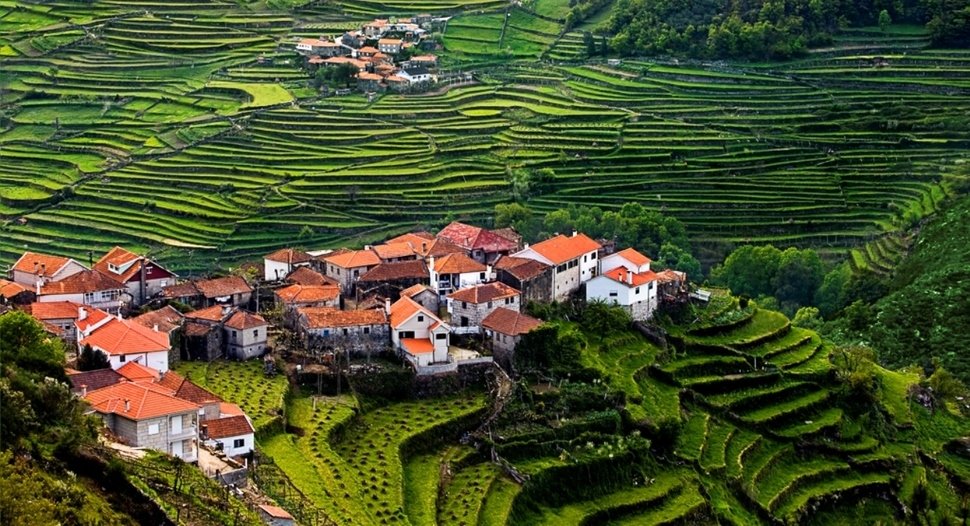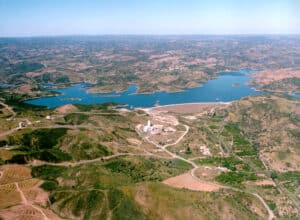Minho plans under public consultation until May 16
Just as the Scope Definition Proposal for Environmental Impact Assessment for a massive wind farm in the Sotavento Algarve ignites local tensions, the Luso-Dutch group behind it is back in the news for another project, at exactly the same stage, for a 32-turbine project in the Minho region.
The intention of Madoqua IPP, based in the Netherlands, is to set up a wind farm in Sistelo, Arcos de Valdevez, connected to another in Merufe, Monção, both in north western Portugal, writes Lusa, and very much like the project under public consultation in the Algarve, the time given for people to give their opinions is very short: two weeks (in fact, there is less time given for this project, than the one in Cachopo).
The Scope Definition Proposal for the Environmental Impact Assessment submitted to the Environmental Impact Assessment Authority, comprising 197 pages, provides for “the installation of 32 wind turbines with 112-metre-high towers and rotors with a diameter of 175 metres (…) and a very high voltage power line that will connect the wind farm to the public service electricity network connection substation”.
The Scope Definition Proposal, drawn up between December 2024 and March this year, covers the village of Sistelo, classified in 2017 as a national cultural landscape monument, the first landscape in the country to receive this distinction.
The “study area of the wind farm partially overlaps the Peneda-Gerês National Park (PNPG), the Special Conservation Area (ZEC) and Special Protection Area (ZEP) of Peneda-Gerês, the Gerês Biosphere Reserve and Natural Habitats, and the Special Conservation Areas of the Northern Regional Directorate for Nature Conservation and Forests”.
According to the company, “in terms of licensing structure, the Environmental Impact Assessment for the Arcos de Valdevez wind farm and its power line will be submitted for assessment in the preliminary study phase”.
“Subsequently, during the implementation phase, the environmental compliance report for the implementation project (RECAPE) will be developed, responding to the indications and recommendations of the Environmental Impact Statement,” the document reads.
The “phased licensing process thus allows for the involvement of stakeholders at different stages of the project’s development, making it more tailored and aligned with the interests of communities and authorities”, says the company, and “the project is in the initial preliminary study phase, which will be completed upon submission of the environmental impact assessment”.
In other words, this is a very similar plan to the one decried in Cachopo by environmental group Aware Algarve: Madoqua is proposing to construct a wind farm in protected landscape with vulnerable habitats.
In the eyes of environmentalists, this could well be another situation of “corporate greenwashing backed by state silence” (certainly, the timing of these public consultations coincides with an election race. By the time the elections are over, the public consultation process will also be over).
The project’s licensing authority is the Directorate-General for Energy and Geology (DGEG) and the Environmental Impact Assessment Authority is the Portuguese Environment Agency (APA).
“The Arcos de Valdevez wind farm project is a new project without any precedents. However, it should be noted that the project was presented in a different version to the Arcos de Valdevez municipal council, as part of the request for preliminary information, and the current version has been optimised in view of the constraints identified,” the document to which Lusa has had access states.
The proposal states that “there is a need to propose biodiversity monitoring, specifically of birds and bats, for the construction and operation phases of the project.
‘It is also considered very likely that a noise monitoring plan will need to be implemented for the operation phase and, if justified, for the construction phase”.
Again, a situation as in Cachopo, described by opponents as “putting turbines first, and asking nature to adjust later.”
At the “construction level, the impacts of the work will be assessed, paying particular attention to the proximity to population centres, equipment and infrastructure, housing, and conflict with other land uses”, says the document.
“During the operational phase, the project’s impacts on human uses of the land will be assessed both on a macro scale (socio-economic impacts at municipal and regional level) and on a micro scale (socio-economic, as well as psycho-social and behavioural impacts at local level),” the proposal states.
The company says that “particular attention will be given to measures aimed at minimising the impact of the project on urban functions and on the mobility of the local community”, and that “a proposal for an information and communication plan with local communities will also be developed, to be implemented during the construction phase”.
The mitigation measures to be presented in the environmental impact assessment “will include, among others, seasonal restrictions on construction activities to protect birdlife, installation of anti-collision devices on power lines and wind turbines, minimisation of waterproofed areas, safeguarding of heritage and the public water domain, creation of ecological corridors, reforestation measures using native species and specific measures for the conservation of habitats and species of community interest”.
A compensation plan is also planned, with the main objective of contributing to the local development of the municipalities of Monção and Arcos de Valdevez, where the energy production project is located, and which will also provide a positive response to the most affected environmental factors.
What could possibly go wrong? Well, as in the Sotavento, the people of the Minho are not in the least bit happy with this project.
Público reports that a group of citizens have already drawn up a petition which is busily gathering signatures. The petition can be found on the petição pública site.
Locals’ antipathy stems from the emblematic nature of the village of Sistelo, the beauty of its landscape, and how this will be sacrificed for… corporate gain.
Público explains that Madoqua’s plan is for the electricity produced by the wind farm to “be fed into the Public Service Electricity Network (RESP) for the future energy and technology centre in Sines”. The company plans to install “high-capacity electrolysers and other industrial facilities in Sines, with which hydrogen and green ammonia will be produced, to supply both local industry and pan-European clients”.
Opponents led by environmental group FAPAS will be sending the petition to national and public bodies, as well as to UNESCO’s National Commission, in view of “the serious impact of this project on the Gerês/Xurés Transfrontier Biosphere Reserve, declared by this body on 27 May 2009”, Público adds..
FAPAS has alerted to the noise that will emanate from this massive project (between 92 and 106.9 decibels) as being potentially prejudicial to public health, to the well-being of communities and regional fauna.
In short, this is a rural area where silence reigns – and now an entity based in the Netherlands wants to change all that, on the basis that it has looked at the area, understands what is at risk, but cannot site the project anywhere else… According to Público, “citizens maintain that the project does not respect national or international regulations, like the European Landscape Convention, and enters into conflict with PDMs (municipal plans) of boroughs affected”.
For all the good intentions proclaimed in Madoqua’s proposal, “we cannot forget that the main objective of a company is to distribute profits to its investors”, FAPAS adds.
Source material: Público/ LUSA


























